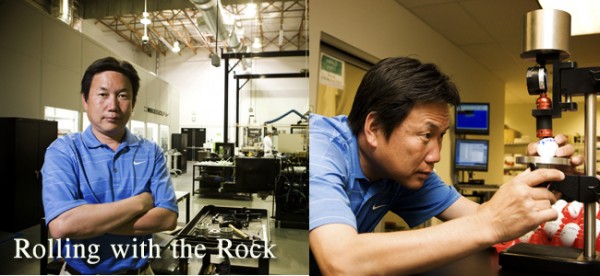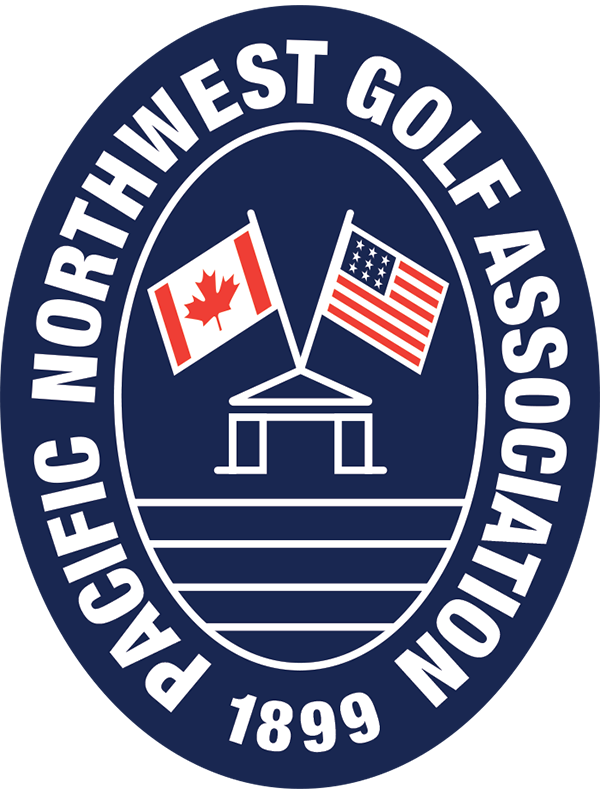The Man Behind Nike Golf’s Transformational Golf Balls – Rock Ishii, OGA Member

by Eric Yaillen
OGA Director of Marketing & Communications
After completing a Masters Degree in Mechanical Engineering in 1989, Hideyuki “Rock” Ishii joined Bridgestone Tire and was the only new engineer to take the leap into their very small sports division. He has been focused on golf ball technology ever since and has been the pioneer leading most of the major shifts in golf ball technology over the past two decades.
While working with players such as Nick Faldo and Nick Price, it was Ishii who invented the first competition two-piece ball.
So when Nike decided to enter the golf market full-bore in 1996 and chose to tackle the golf ball first, they turned to Ishii to lead the way.
Nike has a history of doing things like no one else. Ever since Phil Knight and Bill Bowerman poured rubber into waffle irons for their prototype running shoes, the company has conquered whatever category it has pursued. Golf would be next.
While continuing to work at Bridgestone Sports in Georgia, Ishii designed the first Nike golf ball which was used by Tiger Woods in his 15-stroke victory at the 2000 U.S. Open at Pebble Beach. “That was an historic and transformational moment for the golf ball industry,” says Ishii. It was also the year the wound ball would disappear; more than 100 years after it (the Haskell ball) was invented.
“For me, Nike is first and foremost a science, research and development company that happens to focus its efforts to just about everything related to every sport,” said Ishii. “When I decided to move, the total sales for golf companies were about $1.4 billion. Nike’s sales were nearly 10 times larger than any golf company. Golf balls are a quiet product creatively. We needed fresh blood and new ideas and I felt Nike was the only company that could spend money to really change the nature of golf balls. I also knew they had lots of resources, knowledge and expertise in other areas with technology that might be applied to golf balls.”
For instance, injection molding for running shoes meant there was a mold shop on campus so they could make the molds they needed for golf ball.
Cross-pollination of discoveries is common at Nike. In fact, you’ll find Ishii’s knowledge of dimple aerodynamics in the end caps of baseball bats. That came about after he joined Nike Golf as its only ball engineer and moved to Oregon in 2002.
Today, Nike Golf’s Research and Development team has expanded globally to more than 35 engineers as well as additional outside manufacturing consultants. Their R & D facility, presently located in Tigard, Oregon (soon to move to Beaverton), has complete research, prototype and testing capabilities.
“We create our golf balls using science first,” noted Ishii. “What are we looking to do? Hit the ball farther, straighter, spin it more, spin it less, hit it high or keep it low? We prove it in a lab environment first, then prototype it using the science we’ve proven out. Next, we take it into the field for testing so golfers can touch and feel it.”
It’s a 12-18 month process that starts with many weeks of research reading current patents in areas involving materials, construction and aerodynamics, and then applying that knowledge to a golf ball while simultaneously pursuing computer modeling of dimple design.
“Most of the time we can do simulations and evaluate theoretical performance without actually making a golf ball,” he added. “But that is where it gets difficult. A golf ball has to work with up to 14 different clubs in a player’s bag, then there’s sound, feel, lie and different weather conditions. I might turn four or five ideas into prototypes for indoor and outdoor testing. Then we go back and revise specifications and try again, and we might go through this cycle three or four times.
Taking a golf ball to market is the final step, with the ultimate goal to increase market share.
“Too many golfers, especially mid to high handicap golfers, play a ball without knowing what it is or does. They’ll choose the most expensive golf ball thinking it’s the best golf ball – but it’s not. It depends on what they need the golf ball to do. If you need extra distance, then get a ball that provides the best opportunity to achieve the right launch angle and spin.”
The key is using science to maximize your potential.
“We call the first step ball-fitting but really it’s education,” said Ishii. “We give them a chance to test different balls with their clubs and then show data to help them understand what is good and bad about each one. That is the first step.”
Ishii works regularly with the likes of tour players Stephen Ames, Justin Leonard, Paul Casey, Stewart Cink and of course Woods. “Today’s golfer will go for a ball-fitting checkup a few times a year because their swing changes.”
Through research and development, Ishii determined he could induce different reactions from the ball when a golfer hits it by varying the layers or covers surrounding the rubber core. From the two-piece competition ball he invented, today’s ball contains up to five covers, each designed with a specific result in mind.
Nike is focused on technological advancements from the invisible 20-micron coating that until now has been only used to improve appearance. In fact, the new Nike Crush is the first ball where that coating has a function of reducing excess spin off the tee and also imparting slightly more spin for the chip shot.
“Ninety-nine percent of golfers out there don’t have the consistency they want for both center and off-center shots and they are always looking for ways to improve their game,” says Ishii. “We believe we can improve it with technology. That’s the fun part. It’s our responsibility to help them.
If I was working only in golf balls for a company that was only in golf, I would probably be worn out, but the environment at Nike helps me refresh every season. There are so many crazy fun ideas and innovations here that inspire us to help make golf more enjoyable.”






